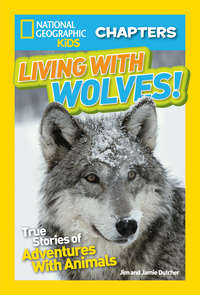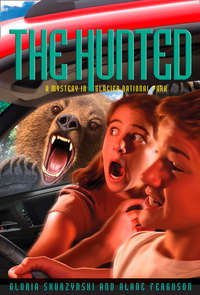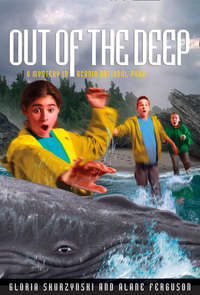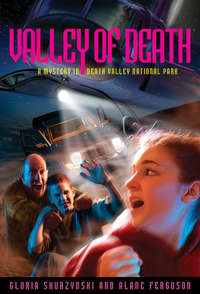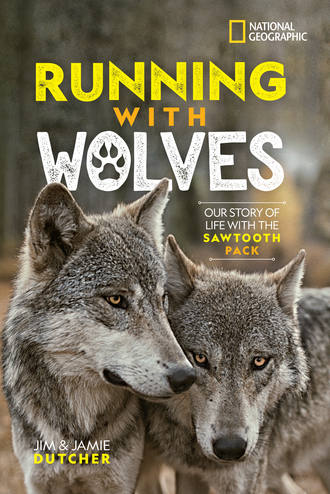
Полная версия
Running with Wolves
The baby kangaroo was no bigger than the length of my hand. Like all joeys, he would normally live inside his mother’s pouch for six months after birth before developing enough to venture outside now and then. But this poor little guy, who we called Rufus, was only three months old and completely helpless. He would never survive without the care of his mother—or without the care of three determined zookeepers.
We were the only chance Rufus had. We had to mimic the conditions of a mother kangaroo in every possible way, including the soft, moist, and warm environment within her pouch. But how?
Part of the answer was clear—make a substitute pouch. We fashioned a number of comfortable pouches out of soft cotton pillowcases. To hold in body moisture, we covered Rufus with a special kind of skin cream. For warmth, we placed him inside one of the cotton pouches and set it in a heated incubator about the size of a large aquarium.
Food presented another set of challenges. Baby kangaroos eat every two hours, day and night, and Rufus was no exception. We mixed up a nutritious formula that was similar to his mother’s milk. Then we fed him using baby bottles topped with nipples that were the length and shape of his mother’s.
Joeys have a weak immune system, so we took every precaution to prevent infections. Each time we fed him or handled him for any reason in those first few months, we wore surgical gowns, gloves, and masks. We washed and bleached his pouches after every feeding so there would always be a stack of them ready to use.
To provide the round-the-clock care that a joey needs, we took turns taking Rufus and his incubator home every evening. Those were sleepless nights. After donning my surgical garb, feeding Rufus, wrapping him in a fresh pouch, getting him settled, and changing my clothes, I’d barely close my eyes before it was time to do it all over again.
Needless to say, after such a night I was groggy the next morning at work. So what better way to shake off the cobwebs than to hop around the office? Literally. A few times each day, I or one of the other “kangaroo moms” would cradle Rufus in his pouch and hop around our hospital office for a few minutes. Not just any old hop, either. No, this was a regular dance. Hop, hop, hop, dip to the left. Hop, hop, hop, dip to the right. Repeat and repeat and repeat!
The dance was hilarious. It was also absolutely necessary. The hopping mimicked the movements Rufus would have received inside his mother’s pouch. Such movements are essential to develop the joey’s circulatory and digestive systems. And that’s what we explained to any perplexed visitor who happened by the office in the middle of a kangaroo dance.
All of the loving care paid off. Rufus grew into a healthy and playful young kangaroo. After six months or so, we no longer had to cradle him. Instead we hung his pouch on a doorknob, and he could hop in and out as he pleased.
I can still see him grabbing the pouch, launching himself off the floor, and diving in headfirst. A hodgepodge of limbs and tail stick out for a brief moment, then disappear inside. The pouch churns like a tongue rolling against the inside of a cheek. Suddenly up pops a head. The mischievous look on his face was priceless.
So was the experience of caring for this little life. Rufus took us on an exhausting, emotional roller coaster, and I wouldn’t have traded the wild ride for anything. Taking care of Rufus and other at-risk creatures at the zoo was never a job to me—it was a passion, a passion born out of my love for animals.
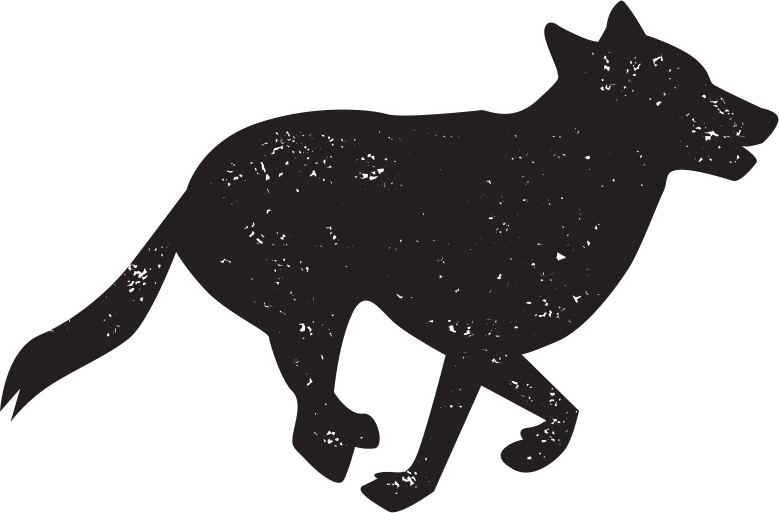
That love began long before I ever dreamed of working at the zoo. In fact, it was evident to others when I was only a few years old, when my hands held not animals but crayons.
The first recognizable picture I ever drew was an elephant. At least, that’s what my grandmother told me, and I believe her. When I wasn’t drawing pictures of animals, I was reading about them. If there was an animal on the cover, that’s the book I opened. Even well into my teens, I would trade a mystery or adventure novel for a book about animals any day.
Drawings and stories sparked my imagination, but what I enjoyed most were my outdoor adventures, where I was in the animals’ world. As a young girl, I loved exploring the woods behind my house in suburban Washington, D.C., searching for wildlife. Those woods were my wilderness. I could lose all track of time wandering among the oak and hickory trees, turning over fallen leaves and peeking under logs in search of salamanders and frogs.
I kept my eyes peeled for snakes, too. Not to avoid them, but to get a good look at them! They didn’t give me the willies like they do some people. Instead, I was mesmerized by their colors and patterns, by how they moved and what they did.
My suburban wilderness was also home to larger animals, like white-tailed deer. But that’s not all. When I was seven years old, I heard that someone had spotted a black bear in a nearby wooded park. I searched those woods for days. I imagined what I would say to the bear if we met. No doubt we would like each other. In fact, I let myself believe that we would become friends.
I never did find the bear. And as I grew older and learned more about wildlife, I realized that a human and a wild animal could not become friends. At least, that’s what all the experts said.
My passion for wildlife only grew. After college, I tried to settle down and live a “normal” life, apart from all things wild. But animals were never far from my mind. I longed to be part of their world. So, in my mid-20s, I made two decisions that allowed me to follow my passion.
First, after working at a small-animal clinic, I decided to apply for a job at the National Zoo. There at the hospital I took care of sick, injured, or other at-risk animals, like Rufus.
The second decision ended up being the most monumental one of my life. I took a trip to Africa.
I traveled with a friend to Zimbabwe to photograph some of that African country’s amazing wildlife. I had always enjoyed photography, and this was a chance of a lifetime to see elephants, gazelles, lions, and other wild animals in their natural setting. The trip was phenomenal, but the most significant moments took place on the way home.
My friend and I were boarding a plane in London to begin the second leg of the long journey back to Washington. With my backpack flung over my shoulder, I was trying to avoid banging into other passengers as I shuffled my way down the aisle. I was about to pass a man placing a bag in the overhead compartment. Suddenly he looked at me and asked, “Have you been in Africa?”
I had a deep tan and was wearing a beaded necklace of coral and warthog tusk. Clearly, I couldn’t have gotten the tan or the necklace in London, so with a smile and a good-natured touch of sarcasm, I responded, “Yes, what gave it away?”
He smiled back and mentioned my necklace. Then he started asking about my trip. Where had I been? What animals had I seen?
But a narrow plane aisle with annoyed passengers piling up behind us was no time or place for an extended conversation. So, after a few brief answers, I continued to my seat a dozen rows back.
Every day people have brief encounters that they never think about again. It might be chitchat in the checkout line at the grocery store or a pleasant exchange of “Thank you” and “You’re welcome” while holding open a door for a stranger. This easily could have been one of those forgotten encounters.
Fortunately, the man who had struck up a conversation with me wanted to continue it. After we reached cruising altitude, he looked back, unclasped his seat belt, and walked down to my aisle seat. He greeted me with a sweet smile and a kind “Hi again.”
We talked easily. He too was on his way back from Africa. He had been visiting his sister in Kenya, where she and her husband operated a tented camp in a remote area. We swapped stories of the African animals we had seen. Through our tales, we relived the wonder of the wildlife and the respect for the natural order of things that we had witnessed on the African savanna.
I immediately launched into a story about when I saw a pack of five spotted hyenas splashing through marshy waters to steal a zebra carcass from three lions. It was like an old-fashioned sword fight.
The hyenas attacked first. Then the lions withdrew, dragging most of the kill with them. Ever the opportunists, the hyenas snatched up a few hunks of meat left behind, then withdrew a few feet themselves.
Not satisfied with their meager scraps, the hyenas made another charge. Their high-pitched hums and whines sent a shiver down my spine. Instantly one of the lions surged forward with a ferocious roar and scattered the thieves. But they immediately regrouped, chased away the lions, and claimed their prize—the rest of the carcass. Victors: hyenas!
My new friend listened with rapt attention. Then, with his blue eyes sparkling, he described in vivid detail how a cheetah had chased down a gazelle. As he spoke, I could smell the dust kicked up from the dry grasses and feel the relentless heat of the sun. I saw the rippling muscles of the cheetah as she hunted the nimble gazelle. With his hands, my friend pantomimed how the cheetah gobbled up ground with bursts of speed as fast as a car on the highway.
I immediately knew I was in the presence of a gifted storyteller.
Not surprisingly, he revealed he was a filmmaker. In fact, at that moment he was finishing a film about the life of beavers for National Geographic. He told me he was on his way to their headquarters in Washington to discuss the film’s progress.
The more we talked, the more we enjoyed each other’s company. Our common interests certainly helped. In addition to being a filmmaker, he was, like me, a photographer, a bird-watcher, and passionate about wildlife. I was also taken by his smile, his laughter, and his kindness.
Then we got separated.
In the mad rush of people getting off the plane in Washington, I lost sight of this man whom I wanted to know more about. I didn’t even know his name. With a sigh I resigned myself to the fact that we would never see each other again. Our relationship would be no more than pleasant conversation to pass the time on a long plane ride.
Fate appeared to have other ideas.
As I joined a hundred other people at baggage claim to get my luggage, I turned—and there he was! We both beamed in recognition, and relief, and picked up our conversation. He told me more about his wildlife films, and I told him that I had applied to work at the National Zoo.
And we finally introduced ourselves. Now I had a name to put with the face of Jim Dutcher.
Despite the bond we felt for each other, we lived in two different parts of the country, almost in two different worlds. After Jim’s business in Washington, he was heading home to Idaho.
Idaho! I never would have guessed it. I had nothing against this western state, of course. It’s just that I didn’t know anything about it, except that potatoes came from there. My mind flashed back to grade school and the maps that showed the main products from each state. I pictured the map of Idaho with potato icons scattered about.
For an Easterner like me, who had never been west of the Mississippi River, Idaho seemed as remote as Africa. I couldn’t imagine life there.
Little did I know that in a few years’ time, Idaho would be the place where all my dreams would come true.
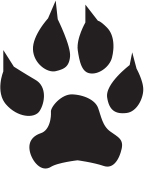
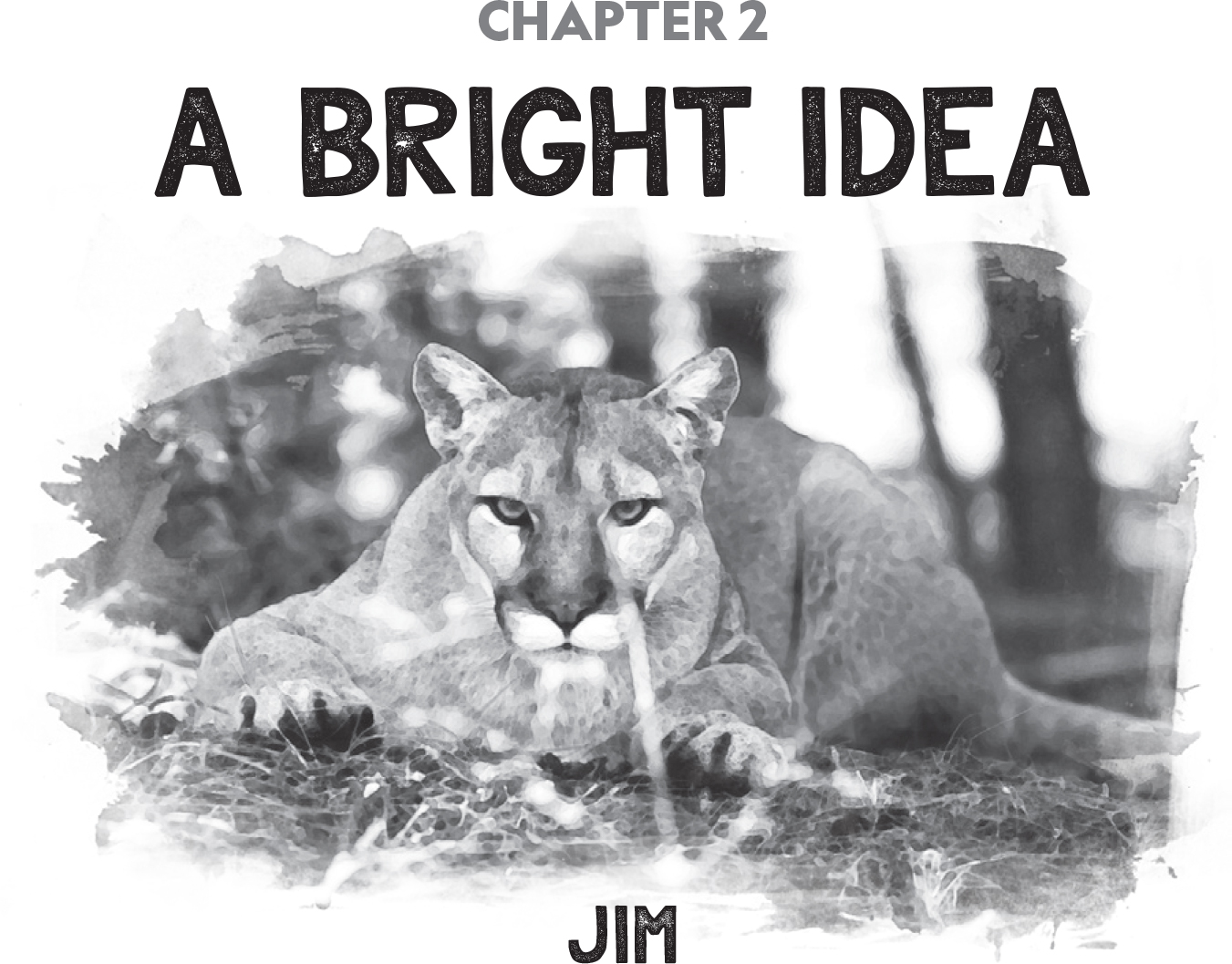
Long before the thought of living with wolves ever entered my mind, and even before I met Jamie, I honed my skills as a wildlife filmmaker. My first films were undersea adventures. I focused on the colorful fish that live among the reefs off the shores of my native Florida.
As beautiful and fascinating as I found the ocean, I was drawn to the forested mountains of the West. My teenage experiences as a wrangler fed my desire to film some of the animals that live there—like beavers.
These creatures are usually either underwater or in their lodges, making them tough to spot in the wild. So instead, for my movie, I built a beaver lodge inside a log cabin. I was able to film—from the other side of a large window—the comings and goings of a beaver family and show the world these quirky animals’ daily activities. I even filmed the birth of beaver kits.
The subject of my next film was a larger and decisively more dangerous animal. It was also much more elusive, almost to the point of being ghostly.

The cougar grasped the neck of the deer in her powerful jaws as she dragged the limp body through the dry pine needles and sparse clumps of grass. When she released her grip, the lifeless animal hit the ground with a thud.
The deer had been struck and killed by a vehicle—a certain tragedy for the deer and most likely a harrowing experience for the driver. For the cougar, it was a week’s worth of meals. But the food wasn’t only for her.
Three male cougar kittens watched with interest from the shadows of a nearby rocky perch. Their spotted youthful coats made them difficult for the naked eye to see. But my telephoto lens clearly caught their expressions, which seemed to say: “Here’s something new.”
Until this point, the six-week-old kittens’ nutrition had come exclusively from their mother’s milk. It was now time to wean them away from nursing. As carnivores, they needed to experience the taste of meat. This would be their first.
The mother looked up toward her kittens and sounded the call for dinner. Meow! Meow! Remarkably similar to the mewing of a household cat, the call of the cougar was nonetheless sharper, shorter, and more determined. To my ears it sounded like she was saying “Now! Now!” and was not about to take no for an answer.
The kittens dutifully heeded the call. Placing one furry oversized paw in front of the other, they gingerly stepped down from their perch toward this new lesson in survival.
Meanwhile, the mother prepared the meal the way mother cougars do. She cleaned a portion of the deer’s belly by removing the fur and tough skin with her raspy tongue and teeth to expose the fresh meat for her kittens. Then she took a few bites and walked away.
This was the part of the lesson the kittens had to learn for themselves—how to actually eat prey.
They approached the deer steadily but cautiously. One batted it with his paw, perhaps testing if it was really dead. Another tugged at one of the deer’s large pointy ears. He kept gnawing on the tough leathery appetizer, ignoring for the moment the entrée his mother had prepared on the other side.
The kittens not only had to get used to solid food but also had to learn how to chew and swallow it without eating the fur. Now and then, a kitten gagged, opening his mouth wide and releasing a harsh Ack! from his little throat.
I couldn’t help but smile behind the camera. It was thrilling to capture this brief snippet of cougar life. It was one of many rare glimpses into the hidden world of this magnificent animal. I was documenting behavior that few if any humans had ever witnessed. Every moment was new and surprising…and priceless.

How was I able to get such intimate footage of an animal that was seldom seen in the wild, let alone filmed? Not by chasing after it, that’s for sure.
I had better methods in mind. And the lessons I learned from making my cougar film would prove to be invaluable, especially when I began studying wolves several years later.
The idea to focus on cougars came from Jamie. I was in Washington for meetings while finishing the beaver film. As usual, Jamie and I met for lunch while I was in town. I wanted my next project to be about a big cat—perhaps cheetahs in Africa.
Jamie suggested cougars instead. These animals go by many names—mountain lion, puma, catamount. The idea intrigued me. I had never seen one in the wild, but I knew they were out there, roaming the same forests and mountainsides that I called home. I later discovered that Jamie had steered me toward cougars partly to keep me in the country. I was glad she did.
While planning the cougar project, I knew that I would have to bring the cougar to me. That meant filming in an enclosure—a large fenced-off area on the edge of wilderness. I didn’t want to fool anyone. I would make it clear in the documentary that I was using an enclosure, and in fact, make the enclosure part of the story. I’d let the viewer “in on the secret” by revealing how I was making the film.
I envisioned creating a semiwild situation in which a mother cougar and her kittens would be accustomed to my presence and allow me to film them without changing their behavior. While the cougars could not pursue large prey or roam without boundaries, they would be free to hunt small animals, communicate, show affection, and interact as a family.
With such a secretive animal, these behaviors would have been impossible to film in the wild. But in a large enclosure, I could film and record up close the sights and sounds that no one had ever seen or heard. Such an intimate look at this illusive animal would make people value it and want to protect it. That was my goal.
It was a tall order.
First on the to-do list was finding a site to build the enclosure. Working with a biologist, we found the perfect place—five acres (2 ha) of government land in the White Cloud Mountains of central Idaho.
The U.S. Forest Service granted my crew the land for a two-year study. The site was suitably rugged and included huge boulders, groves of aspen and pine trees, open grassy land, a stream, and a pond. We set wooden posts in the ground and connected them with chain-link fencing. Three tents just outside the fence would be our home for two years.
We also had a plan for the cougar’s food—roadkill. We arranged for local authorities to notify us when a large animal had been struck on the road by a vehicle. Then we’d head out, scoop up the carcass, and bring it to the enclosure for the cougar to find and feast on.
It was a good setup and a good plan. Now all we needed was a cougar.
After a long search, we located a 110-pound (50-kg) female. She had been raised in captivity, yet she maintained her wild nature. Perhaps she was a bit too wild or simply too much to handle, because the owner was going to have her put to sleep!
Upon hearing such disturbing news, the zoo in Boise, Idaho, bought the cougar. But the zoo had little space for her, and officials there were delighted to let us provide her with a home.
Two things made this cougar the ideal choice: One, because she had been raised in the presence of humans, she was already used to having people around. Two, she was pregnant. The kittens would be born in just a few months.
I could hardly wait. How does a mother cougar interact with her kittens every day? How does she care for them? What does she teach them? I had so many questions, and I wanted to capture the answers on film and show the world.

The pickup truck backed up to the entrance of the enclosure. It was a warm day in late spring. I let out a grunt as I helped ease the steel crate off the truck and gently onto the ground. I slid open the door of the crate and the feline mother-to-be walked out calmly without even looking at us.
Good. The less attention paid to us the better.
The bright sunshine made the cougar’s tan fur glow golden. Her impressive muscles flexed with each stride as she went about exploring her new home. Using her sharp claws and long tail for balance, she skillfully crossed streams on fallen tree trunks. Her powerful magnificence made me gasp. Then she trotted away into the aspens and disappeared. Compared to the pen in which she had been raised, this habitat offered boundless freedom.
We gave her a few hours to acclimate to the new surroundings, and then set off on foot to find her.
It wasn’t easy. With the cougar’s keen sense of smell and sharp eyesight, I’m sure she knew where we were practically at all times. By comparison, our senses were dull, and we had to look and listen with all the intensity we could muster. She knew how to hide just by being still. No doubt she was lying low, uncertain that we meant no harm.
Finally, we spotted her. She crouched in the tall grass barely 20 yards (18 m) away—a distance that she could close in two leaps if she wanted to.
We made eye contact. The big cat remained absolutely frozen, watching our every move intently. Suddenly I felt vulnerable, more so than I ever had. I knelt down slowly with my camera hoisted on my shoulder. My sound technician Peter, with his equipment, and my assistant Jake, carrying a large stick, did the same.
The cat continued to eyeball us from her crouched position. Then she raised and wiggled her hindquarters. That got me nervous. Anyone who has seen similar behavior from a house cat getting ready to pounce could guess what happened next…
She suddenly sprang.
We quickly rose to our feet, terrified. This wasn’t a squirrel or a fox coming our way; it was one of nature’s strongest, fastest predators, and she had us in her sights. We started yelling as loud as we could, “Hey! Hey!” and “He-yah! He-yah!”
I exhaled with relief as the cougar suddenly veered off in another direction. But, my relief was short-lived.
She stopped, turned around, and looked at us again. Was she going to make another run at us? My heart was pounding. My knees became almost too wobbly to hold the camera steady. But we stood our ground. Then without warning, she attacked.
With long strides, the cougar ran right at Jake and wrapped her muscular forelimbs around his waist. The force of the impact knocked the stick from his hands. He twirled reflexively to break away, but the cat held on, hopping on her hind legs to maintain balance as she also twirled. It was like a dance, but one that could have deadly consequences.
The cougar looked like she was going to climb up on Jake’s back when Peter ran to Jake with his microphone boom raised like a baseball bat. The threatening stance seemed to do the trick, because the cougar released her grip and ran off.
Jake was shaken but unharmed, a sign that the cougar did not intend to hurt him. She most likely was just playing a cat-and-mouse game, following her urge to stalk and test her skills. That sort of game can turn out badly for the mouse, so I was deeply concerned for the safety of my crew.
Not that it kept us away. Each day, we entered the enclosure to look for the cat, to observe and film. She never attacked us again. Maybe she just wanted to send a message during that first encounter. Message received!
We kept our distance and she kept hers, at first. But each day we inched closer and closer. Soon she got used to our presence and we reached a level of comfort and trust.
In fact, as time went on, the cougar even displayed affection. She would sometimes press her body against my leg and purr. It wasn’t a quiet purr like a household cat makes; her purr was more like an idling motorcycle.
At other times, she would stalk and chase us in a friendly game of cat and mouse. Well, friendly to her—we were the mice. We had gotten used to these games and were no longer fearful. But, we were always on our guard and watchful of any sudden change in behavior.

Our trusting relationship developed just in time, for soon the cougar gave birth to three male kittens.


